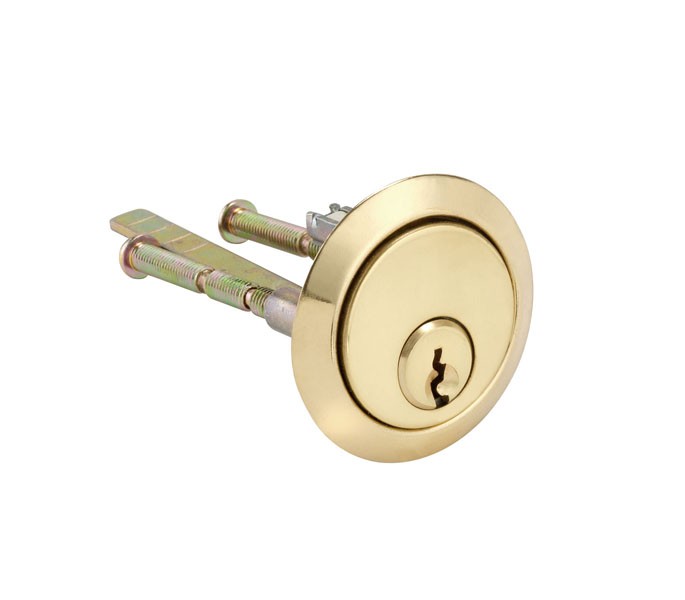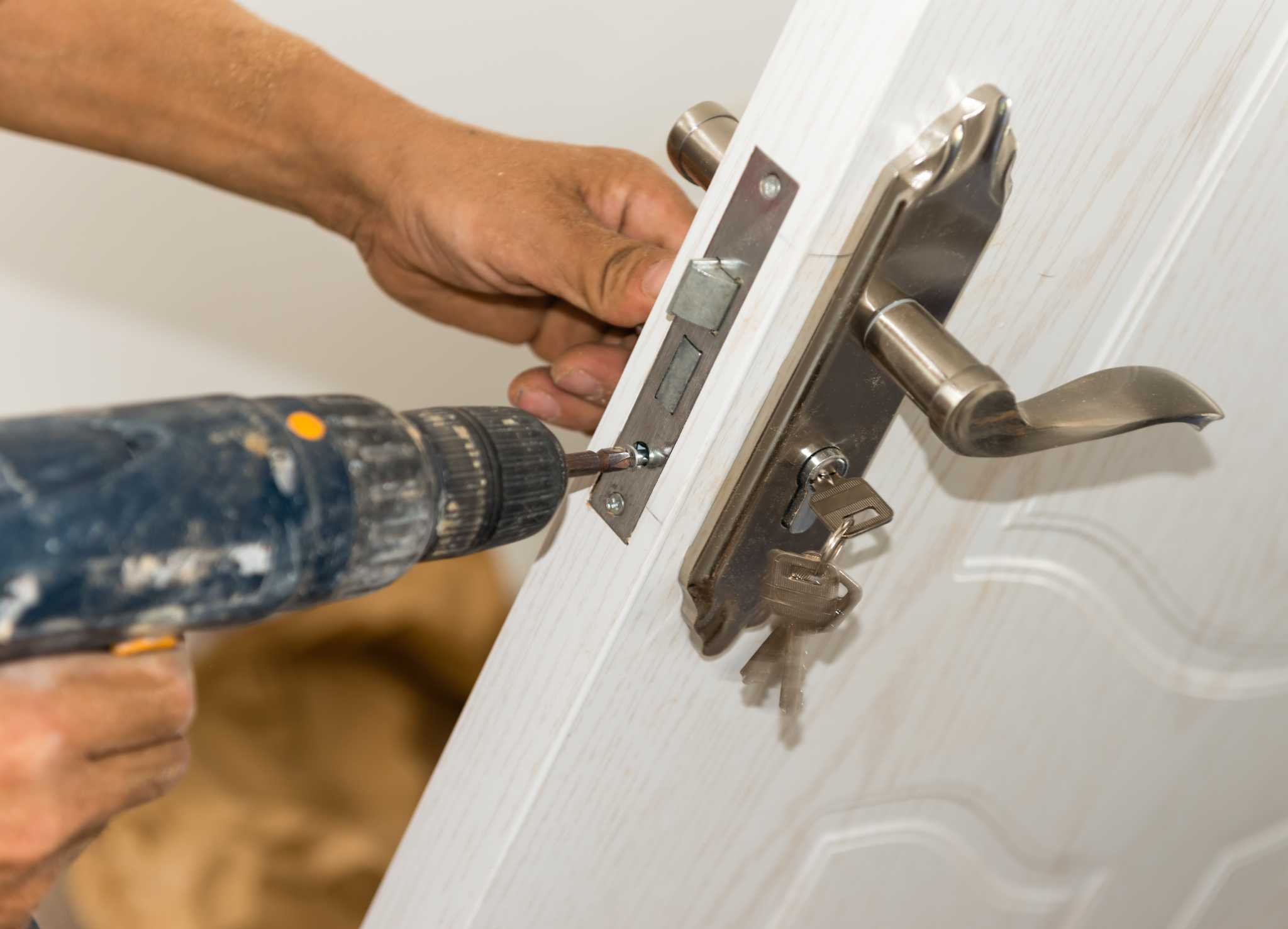Introduction
Changing a rim cylinder lock is a practical and empowering skill that allows you to enhance the security of your space. If you require replacing an old lock or wish to modify your present lock, this manual will help clarify what to do while offering you exact, step-by-step directions. Understanding how to change a lock not only contributes to the safety of your home or office but also gives you the confidence to take charge of your security measures. In this article, we’ll navigate through the fundamentals, making the task accessible for both DIY enthusiasts and those new to lock maintenance. Get ready to embark on this journey of securing your space with the knowledge and skills to change it effectively.

Steps to change a rim cylinder lock
Changing a rim cylinder lock is a straightforward process that can be accomplished with a few basic tools. Here’s a step-by-step guide to help you through the task:
Materials and Tools Needed: New lock,Screwdriver,Allen wrench,Key
Steps:
Select the Right Replacement Lock: Begin by choosing a new rim cylinder lock that matches the specifications of your existing lock. Ensure it is the correct size and type for your door.
Eliminate the Current Rim Cylinder: Pull out the nuts and bolts holding the current rim cylinder on the inner surface of the door with a screwdriver. Once the screws are out, pull the cylinder straight out from the exterior side.
Take note of the keying: Before completely removing the existing rim cylinder, take note of the keying; this ensures that the new lock is installed with the correct orientation.
Insert the key into the new Lock: Prior to installation, insert the key into the new rim cylinder. This will align the internal components correctly.
Install the New Rim Cylinder: Insert the new rim cylinder from the exterior side of the door, ensuring the keyway is facing the correct direction based on your earlier observation. Push it in until it’s flush against the door.
Secure the Rim Cylinder: On the interior side, secure the rim cylinder in place by reattaching the screws using a screwdriver. Tighten the screws.
Check the Functionality: Test the new rim cylinder with the key to ensure smooth and proper functioning. The key should turn easily, and the lock should secure and release without any issues.
Adjust if necessary: If the lock is not functioning correctly, you may need to adjust the position of the rim cylinder slightly. After removing the bolts and making the required modifications, set them back.
Ensure Proper Alignment: Verify that the rim cylinder is aligned correctly with the strike plate on the door frame. Adjust if needed to ensure smooth operation.
Dispose of the Old Lock: Properly dispose of the old rim cylinder and any packaging from the new lock. Keep the key in a safe place, and you’re all set with your newly installed rim cylinder lock.
Troubleshooting Tips
When changing a rim cylinder lock, encountering a few challenges is not uncommon, but troubleshooting them can ensure a successful installation. If you find that the key doesn’t turn smoothly, check for proper alignment and seating of the rim cylinder. Difficulty inserting the key may be due to debris in the keyway; clean it and ensure a clear path. If the key turns but doesn’t unlock, readjust the alignment between the rim cylinder and the strike plate. A loose or wobbly rim cylinder can be resolved by tightening the screws securely. If you face difficulty installing the new lock, verify compatibility with your door specifications. For issues like the key not coming out or excessive resistance when turning, lubricate the internal components or seek professional advice. Troubleshooting ensures a smooth process and the proper functioning of the newly installed rim cylinder lock.
Importance of Regular Maintenance for rim cylinder lock
Regular maintenance for a rim cylinder lock holds paramount importance for various reasons. First and foremost, it significantly contributes to enhanced security by ensuring all lock components are in optimal condition, minimizing the risk of malfunctions. Additionally, consistent maintenance extends the lifespan of the lock, deferring the need for premature replacement. By preventing keying issues such as difficulty in turning or key entrapment, routine cleaning and lubrication keep the lock functioning smoothly. It also lowers the chance of intruders, since a properly-kept lock is an extra trustworthy obstacle for unwelcome entry. Beyond security benefits, regular maintenance is cost-effective, preventing the need for expensive emergency repairs. It improves overall functionality, prevents rust and corrosion, and provides peace of mind knowing that your lock is in top-notch condition. Timely identification of emerging issues and compliance with insurance requirements further underscore the importance of incorporating regular maintenance into your security routine.
The perfect place for exploration
Junying Metal Manufacturing’s website is the go-to place for inventing cool facts about rim cylinder locks and other locks. This website is truly user-friendly and has lots of fascinating information, whatever your knowledge of skill with locks. They’re experts in making metal stuff, and their website is like a treasure chest of knowledge about how locks work. This is an ideal spot to find out while having fun, from basic subjects to deeper topics. So, if you’re curious about how locks, especially rim cylinder-locks, do their thing, Junying Metal Manufacturing’s website is the coolest spot to explore and get some really cool insights!

FAQs
Can I change a rim cylinder lock on my own?
Yes, changing this is a manageable DIY task. With the right tools and guidance, you can successfully replace the lock.
How often should I change my lock?
The frequency of lock changes depends on factors like wear, security needs, and the condition of the existing lock. Consider replacement if the lock is damaged or outdated.
Can I use any rim cylinder lock for my door?
It’s essential to choose a rim-cylinder lock that matches the specifications of your door. Check the size, type, and compatibility before purchasing.
What if my key doesn’t turn smoothly after changing the lock?
Ensure the key is inserted correctly and the lock is aligned. If issues persist, consider adjusting the position of the rim cylinder.
Do I need a locksmith to change a rim cylinder lock?
While it’s a DIY-friendly task, hiring a locksmith is advisable if you lack the tools or confidence to handle the replacement yourself.
Can I use the old keys with the new rim cylinder lock?
In most cases, no. New locks come with their own set of keys. Using old keys may compromise security.
Is it necessary to lubricate the new rim cylinder lock?
Yes, it’s recommended to lubricate the internal components of the new lock during installation to ensure smooth functionality.
Conclusion
In conclusion, changing a rim cylinder lock is a manageable task with the right knowledge and tools. Empower yourself with this guide and confidently enhance the security of your space. Remember, safety first and precision throughout the process will result in a successful lock replacement.
